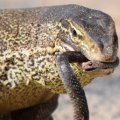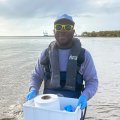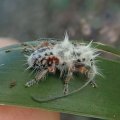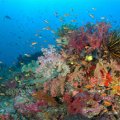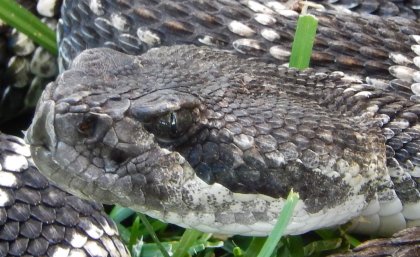
A surge in snakebite deaths caused by one of North America’s most dangerous snakes has been baffling doctors, but new research may hold the key to saving lives.
A study of Southern Pacific Rattlesnake venom, led by The University of Queensland’s Associate Professor Bryan Fry, has found that by knowing the location where a person was bitten, doctors are better equipped to offer life-saving treatment.
“If clinicians know where a person was bitten, they will know how the patient is likely to be affected,” Dr Fry said.
“These snakes live in habitats as diverse as the isolated Catalina Island, the high-altitude San Jacinto mountains, the grassy hills of Loma Linda and the desert transition zone of Phelan.
“In a two-hour drive from the desert floor to the top of the San Jacinto Mountains, the venom goes from destroying the blood to frying the nerves instead.
“Over millions of years, living in these very different habitats has led to specialised venom chemistry which needs to be understood to effectively treat snakebite patients.”
Dr Fry and his team sampled venoms from four diverse regions, including Catalina Island, and analysed the venom chemistry and evolution.
The team found significant differences between populations.
“Mapping the geographical venom variation of this species has important implications for treating bites,” he said.
Dr Fry said the study disproved previous reports that recent, rapid change in the venom was the cause, leading to increased reports of unusual and highly toxic effects in patients.
“Clinicians had been at a loss to explain what was happening,” Professor Fry said.
“However, rather than changing rapidly, the venom varies dramatically between different populations of the snakes due to long-term adaptation to different environments.”
Dr Fry also said reports of unusual effects were likely due to better record keeping and reporting and changes in human behavior, rather than any recent changes to the venom.
“New housing estates are being built on what used to be remote areas, and people with low snake awareness are coming into close contact with Southern Pacific Rattlesnakes,” he said.
“Many times when a patient presents at the hospital it is because they tried to kill the snake and were bitten in the process.”
The research was conducted by scientists from The School of Biological Sciences and the Institute for Molecular Bioscience at The University of Queensland, Universidade do Porto, Portugal, and Loma Linda University, California, and published in the Journal of Proteomics.
Media: Associate Professor Bryan Fry, +61 400 193 182, bgfry@uq.edu.au




